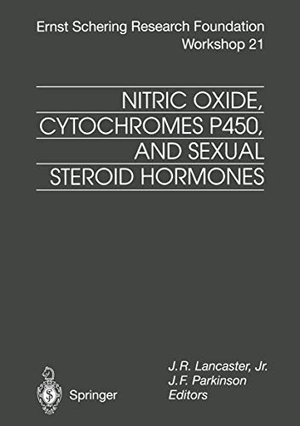Für statistische Zwecke und um bestmögliche Funktionalität zu bieten, speichert diese Website Cookies auf Ihrem Gerät. Das Speichern von Cookies kann in den Browser-Einstellungen deaktiviert werden. Wenn Sie die Website weiter nutzen, stimmen Sie der Verwendung von Cookies zu.
Cookie akzeptieren
Nitric Oxide, Cytochromes P450, and Sexual Steroid Hormones
- Springer Berlin Heidelberg
- 2012
- Taschenbuch
- 328 Seiten
- ISBN 9783662035054
The discovery of mammalian nitric oxide (NO-) synthesis from I-ar ginine has led to profound increases in our understanding of basic physiological and pathophysiological processes. This understanding has been achieved by major advances in several areas. Three major ni tric oxide synthase (NOS) isoforms have been identified at the protein and gene level and their specific tissue localization has been linked to processes subject to regulation by NO-. The molecular basis for the di verse effects of NO- on cell function has been shown to derive from its chemical reactivity with oxygen-containing species and both heme and non-heme iron-dependent enzymes. The potential regulation of heme dependent
Mehr
Weniger
zzgl. Versand
in Kürze